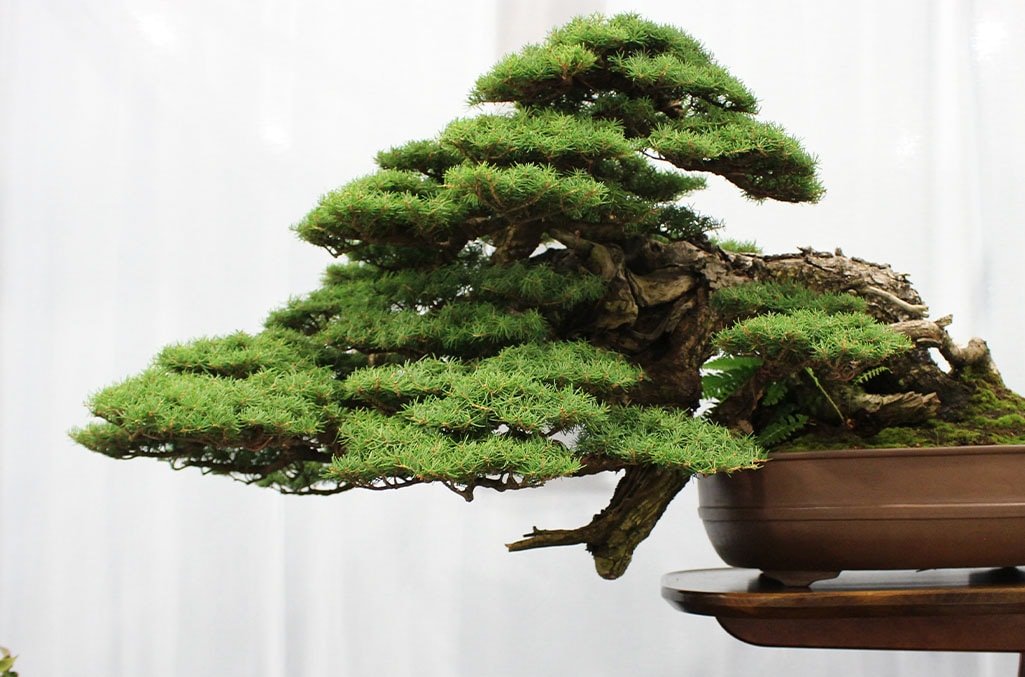🔵 Hemlock, #2413
Kusamura Show consignment, $50 w pot. Apr 2024.
Tsuga Pinaceae—evergreen conifer in the pine family.
Per Michael Hagedorn, place these next to maples—same light condition. Shaded similar to maples, do not treat as a full-sun pine.
SBBK Val workshop
Has new buds but at random, not all over—Let it continue to grow out
May start to wire pads in winter after buds harden
(Formal) Informal upright would bring the apex back over the base
Possibly continue off at and angle, it”s young
Best to cut back to a bud to make less leggy
Top pad and two lower
Wire to let bite in, adding rigidity
Can cut back to a clean fork and build fresh foliage if desired
Top branch has a straight length at the end which looks off, can wire movement or prune back
Front is likely away from the scar so the back branches will be more developed, adding depth
Can bring the top branch down to control height
Build more ramification and worry about being too dense later
Guidance reference below excerpted from Bonsai Mirai.
Hemlocks are tall, graceful trees with spreading branches that droop down at their tips to create a cascading effect. Their cinnamon red bark becomes deeply furrowed as the tree ages.
High water-mobility, high water-consumptive tree. 💦
To maintain the proper balance of water and oxygen, the soil must stay on the moist-to-damp side.
Always water your hemlock bonsai when the soil is slightly damp, as allowing it to dry out could be catastrophic. 💦
Prefer full sun in the spring and fall. It’s best to give your tree morning sun and afternoon shade, or put it under a 30% shade cloth through the intense portions of the summer.
Hemlock bonsai should be fertilized with a ratio of 20-20-20 (nitrogen, phosphorus, potassium) liquid soluble fertilizer to one gallon of water.
Water the tree before applying the fertilizer.
Fertilize every seven to 14 days—beginning in the spring once active growth begins, and continuing through midsummer. Reduce applications to once every 14 to 21 days from midsummer through early fall, stopping once the tree enters dormancy.
Structural setting, styling, and big branch reduction are best performed in the springtime, before the push of growth, or in early fall, prior to vascular productivity.
Post flush hardened pruning allows you to completely control the tree’s shape, open up the interior for light and air circulation, and reduce the number of needles causing thickening. Hemlock bonsai are known to thicken very quickly, allowing the wire to bite significantly.
Hemlock bonsai need to be pruned aggressively (to present bud) post flush hardening to keep vertical growth from running out of control.







